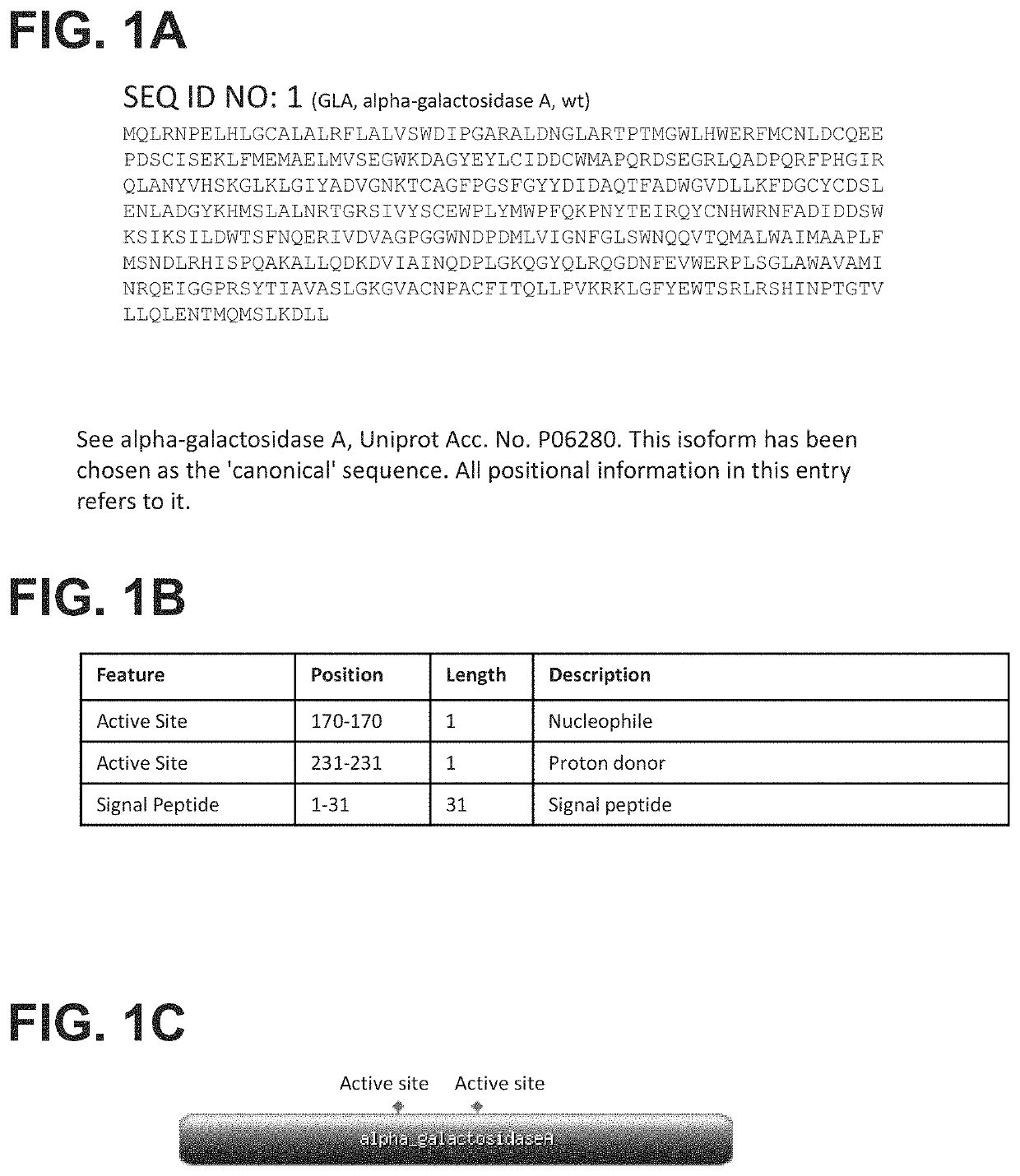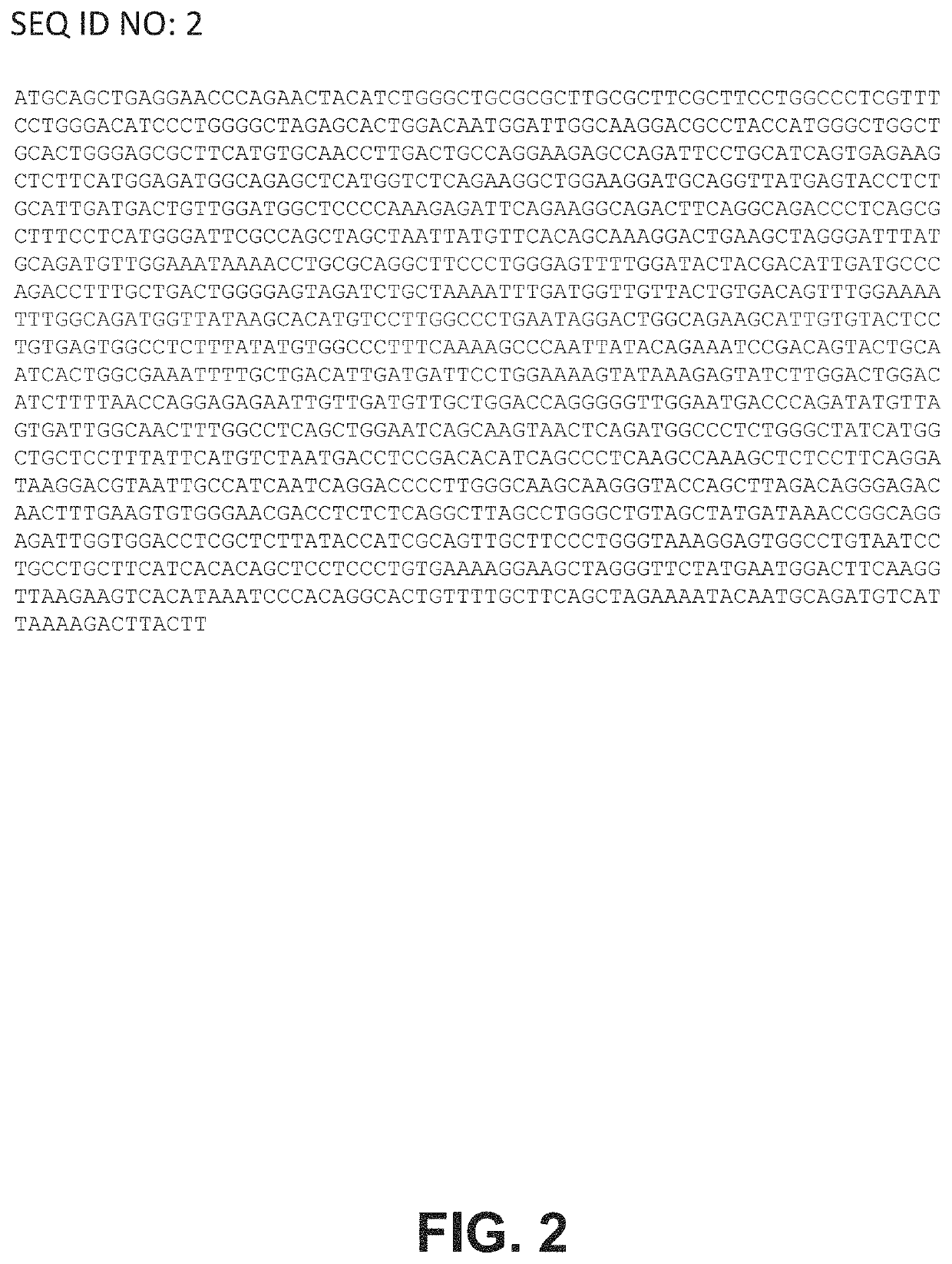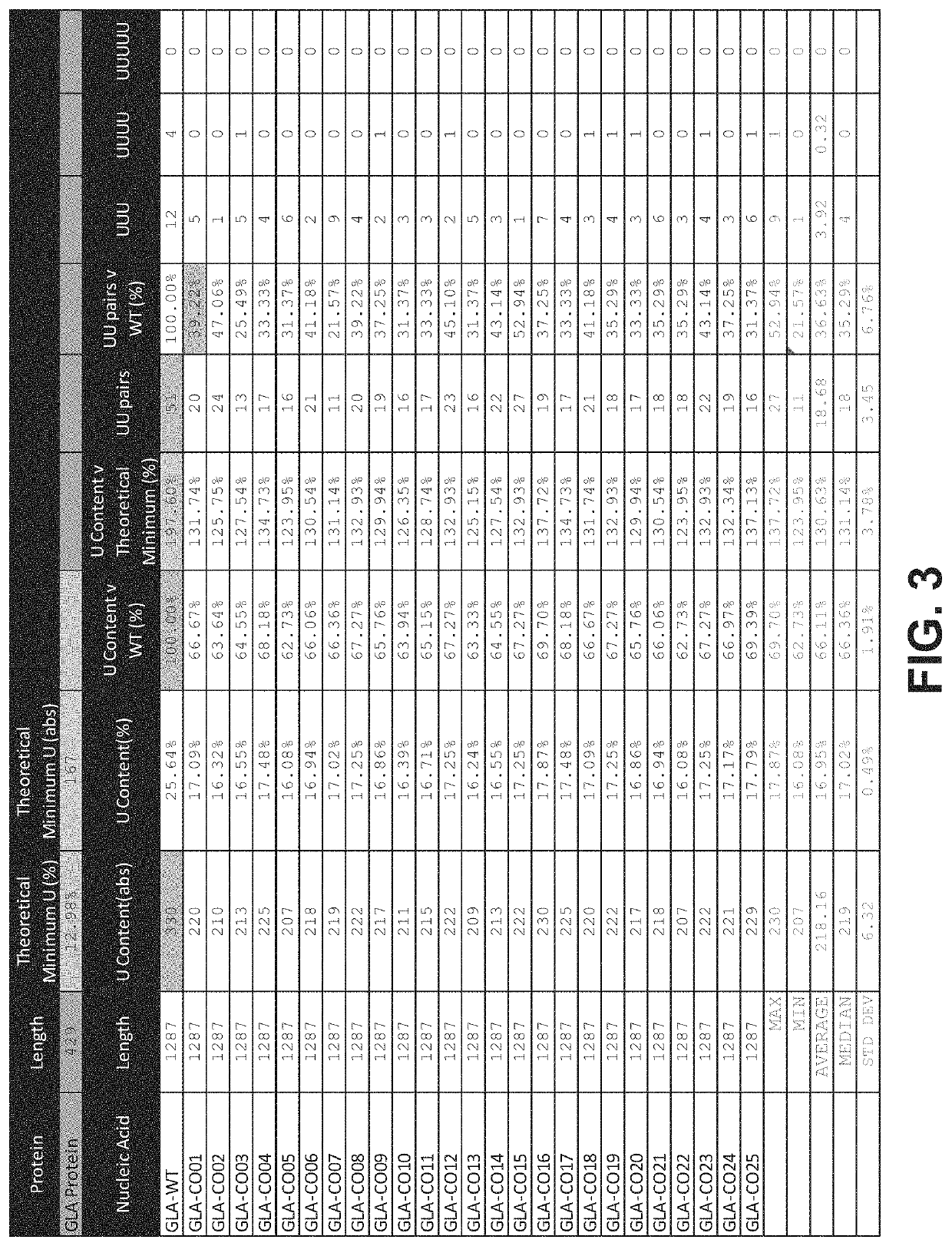Polynucleotides encoding alpha-galactosidase a for the treatment of fabry disease
a technology of polynucleotides and alpha-galactosidase, which is applied in the field of polynucleotides encoding alpha-galactosidase for the treatment of fabry disease, can solve the problems of unproven effectiveness and achieve the effects of reducing the innate immune response, minimizing unwanted immune activation, and optimizing the translation efficiency of mrna
- Summary
- Abstract
- Description
- Claims
- Application Information
AI Technical Summary
Benefits of technology
Problems solved by technology
Method used
Image
Examples
example 1
Polynucleotide Synthesis
[2113]A. Triphosphate Route
[2114]Two regions or parts of a chimeric polynucleotide can be joined or ligated using triphosphate chemistry. According to this method, a first region or part of 100 nucleotides or less can be chemically synthesized with a 5′ monophosphate and terminal 3′desOH or blocked OH. If the region is longer than 80 nucleotides, it can be synthesized as two strands for ligation.
[2115]If the first region or part is synthesized as a non-positionally modified region or part using in vitro transcription (IVT), conversion the 5′monophosphate with subsequent capping of the 3′ terminus can follow. Monophosphate protecting groups can be selected from any of those known in the art.
[2116]The second region or part of the chimeric polynucleotide can be synthesized using either chemical synthesis or IVT methods. IVT methods can include an RNA polymerase that can utilize a primer with a modified cap. Alternatively, a cap of up to 80 nucleotides can be che...
example 2
DNA Production
[2129]PCR procedures for the preparation of cDNA can be performed using 2×KAPA HIFI™ HotStart ReadyMix by Kapa Biosystems (Woburn, Mass.). This system includes 2× KAPA ReadyMix12.5 μl; Forward Primer (10 μM) 0.75 μl; Reverse Primer (10 μM) 0.75 μl; Template cDNA −100 ng; and dH2O diluted to 25.0 μl. The PCR reaction conditions can be: at 95° C. for 5 min. and 25 cycles of 98° C. for 20 sec, then 58° C. for 15 sec, then 72° C. for 45 sec, then 72° C. for 5 min. then 4° C. to termination.
[2130]The reverse primer of the instant invention can incorporate a poly-Tim for a poly-A120 in the mRNA. Other reverse primers with longer or shorter poly(T) tracts can be used to adjust the length of the poly(A) tail in the polynucleotide mRNA.
[2131]The reaction can be cleaned up using Invitrogen's PURELINK™ PCR Micro Kit (Carlsbad, Calif.) per manufacturer's instructions (up to 5 μg). Larger reactions will require a cleanup using a product with a larger capacity. Following the cleanup...
example 3
Transcription (IVT)
[2132]The in vitro transcription reactions can generate polynucleotides containing uniformly modified polynucleotides. Such uniformly modified polynucleotides can comprise a region or part of the polynucleotides of the invention. The input nucleotide triphosphate (NTP) mix can be made using natural and un-natural NTPs.
[2133]A typical in vitro transcription reaction can include the following:[2134]1 Template cDNA—1.0 μg[2135]2 10× transcription buffer (400 mM Tris-HCl pH 8.0, 190 mM MgCl2, 50 mM DTT, 10 mM Spermidine)—2.0 μl[2136]3 Custom NTPs (25 mM each)—7.2 μl[2137]4 RNase Inhibitor—20 U[2138]5 T7 RNA polymerase—3000 U[2139]6 dH2O—Up to 20.0 μl, and[2140]7 Incubation at 37° C. for 3 hr-5 hrs.
[2141]The crude IVT mix can be stored at 4° C. overnight for cleanup the next day. 1 U of RNase-free DNase can then be used to digest the original template. After 15 minutes of incubation at 37° C., the mRNA can be purified using Ambion's MEGACLEAR™ Kit (Austin, Tex.) follow...
PUM
| Property | Measurement | Unit |
|---|---|---|
| Time | aaaaa | aaaaa |
| Time | aaaaa | aaaaa |
| Time | aaaaa | aaaaa |
Abstract
Description
Claims
Application Information
 Login to View More
Login to View More - R&D
- Intellectual Property
- Life Sciences
- Materials
- Tech Scout
- Unparalleled Data Quality
- Higher Quality Content
- 60% Fewer Hallucinations
Browse by: Latest US Patents, China's latest patents, Technical Efficacy Thesaurus, Application Domain, Technology Topic, Popular Technical Reports.
© 2025 PatSnap. All rights reserved.Legal|Privacy policy|Modern Slavery Act Transparency Statement|Sitemap|About US| Contact US: help@patsnap.com



